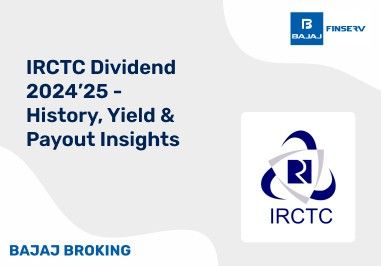Have you ever wondered how some companies build their business like they do, especially public companies? Well, that’s what an IPO is for. An IPO, also known as an initial public offering helps a private company go public. This is done when a private company invites the public to invest in its shares for the very first time. This is how a company raises funds to help further its business operations.
For retail investors in particular, understanding what a Mainboard IPO is extremely important. Most retail investors prefer Mainboard IPOs because these are the initial public offerings made by well-established big private companies.
Here’s a look at everything you might need to know about Mainboard IPOs
What are Mainboard IPOs
One of the main issues that private companies in India struggle with many times is the inability to raise capital to help them grow their business. This stems mostly from the fact that these companies cannot issue their shares to retail or institutional investors, to invest in. The shares of private companies belong to their founders, the family and friends of the founders, promoters, employees, private investors etc. So most of the time, raising capital can become a challenge as the investors are limited. The shares of a public company, however, can be listed on stock exchanges, helping it raise capital through public investors.
A Mainboard IPO helps a well-established private company to go public. Only large corporations with an average operating profit of ₹15 crore, every year, in the past three years can take out a Mainboard IPO. Mainboard IPOs are solely for large corporations. This is a crucial fact that needs to be understood.
Key Features of Mainboard IPOs
Here are some of the main features of a Mainboard IPO:
Mainboard IPOs are for big private companies with an average operating profit of ₹15 crore, every year, in the past three years.
By collaborating with investment banks for underwriting, private companies, get help in deciding their share prices
An underwriter helps the company file the IPO application with the Securities and Exchange Board of India (SEBI)
A Draft Red Herring Prospectus (DRHP) is submitted by the company to SEBI.
Every detail about the Mainboard IPO or even SME IPO is present in the DRHI.
Once SEBI approves the DRHP, the company can issue the final RHP.
Investors are notified in advance about the IPO date, size, face value, etc.
Most IPOs remain open for 3 to 5 days for investors to invest in.
25% of shares are reserved for retail investors in a Mainboard IPO according to SEBI
The Process of a Mainboard IPO
Below is the process involved in the taking out of a Mainboard IPO:
Any big, private corporation that is looking to go public through an IPO to raise capital requires a lot of planning
Such a company has to first appoint advisors for the planning process.
Such advisors also include underwriters who help with the share pricing.
Underwriters are also involved in helping the company file its DRHP with SEBI.
Once this DRHP is approved, the final RHP is prepared
To promote the IPO, the company can also take out various forms of promotions like advertisements, roadshows, etc.
A company launching a fixed-issue IPO will have static share prices.
A book-building IPO issue however won’t have fixed share prices.
The capital raised thus after the IPO closes should be at least ₹10 crores.
This money raised can then be used for R&D, expansion, marketing, etc
Benefits of Investing in Mainboard IPOs
Some of the main benefits of investing in a Mainboard IPO are listed below:
Applying for an IPO helps retail investors become one of the very first public investors in the company.
Companies that take out Mainboard IPOs are well-established organisations and thus the chances of capital appreciation are high.
Since a company uses funds from an IPO to aid its financial performance its market cap will eventually increase, leading to high returns on shares.
Post the IPO completion, the shares are listed on the stock market where they can easily be traded.
IPO investments can easily be liquified
Retail investors have a higher chance of getting a Mainboard IPO allotment as 25% of IPO shares are reserved for them.
Risks Associated with Mainboard IPOs
Where there are benefits in investing in a Mainboard IPO, there are quite a few risks associated with them too. Some of the risks associated with mainboard IPOs include:
The Mainboard IPO is very susceptible to price volatility
Because IPOs are essentially newly listed securities, the volatility in such cases is very high
Because of such price uncertainty, investors could experience losses
This issue can however be surpassed by investing in companies having strong fundamentals.
Some companies might also lack historical data, thus not helping investors make an informed decision.
IPOs also might have a lock-up period
This will prohibit investors from selling IPO shares during a particular time frame, as defined by the company
Conclusion
IPOs can be a great form of investment when it comes to helping an investor diversify their portfolios. IPOs are also very liquid and can be sold quickly on the stock exchanges in case of emergency to generate quick funds. A Mainboard IPO is an IPO that a well-established, big private organization takes out to generate capital for itself through public funding. Companies with an average annual operating profit of ₹15 Crore every year, for the past 3 years can only take out a Mainboard IPO. They are a great investment option for retail investors as the allotment process for them is easier since 25% of Mainboard IPO shares are reserved for them.
Disclaimer: Investments in the securities market are subject to market risk, read all related documents carefully before investing.
This content is for educational purposes only. Securities quoted are exemplary and not recommendatory.
For All Disclaimers Click Here: https://bit.ly/3Tcsfuc













